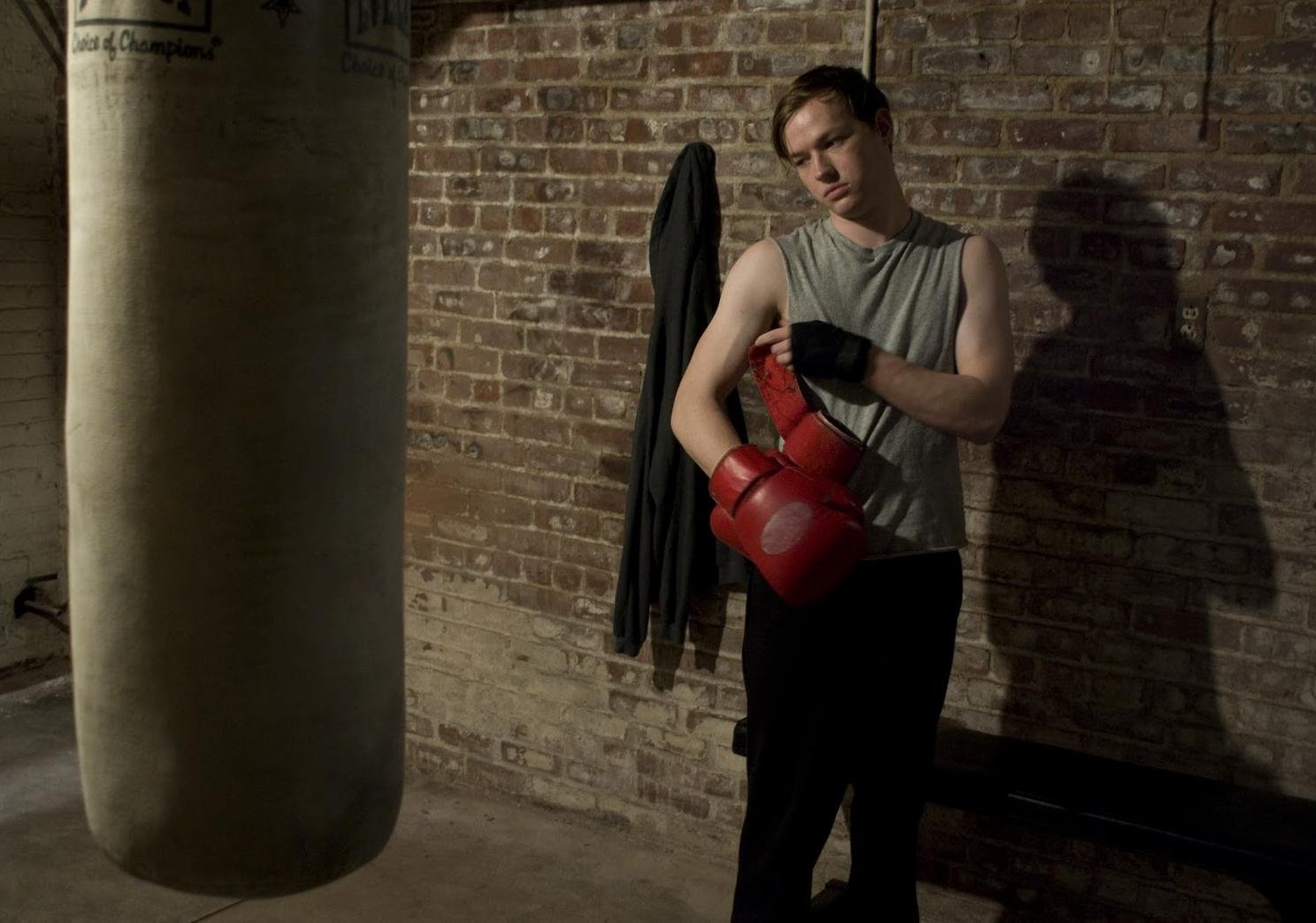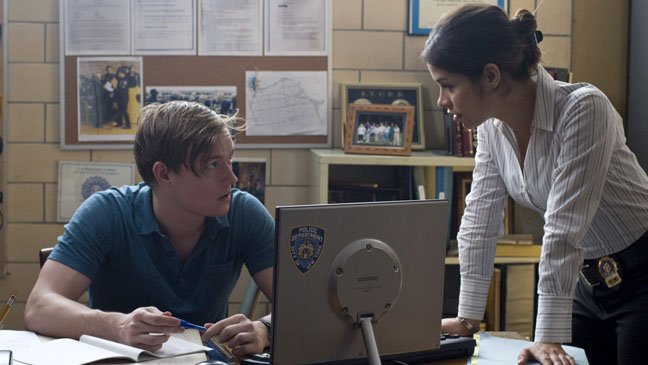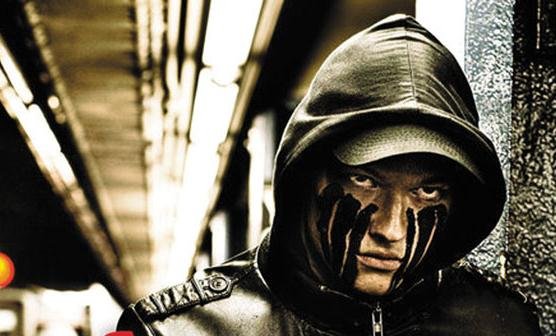BOY WONDER: The Revenge Tragedy's Teenage Years
Don't believe it when some complains that a genre or a specific type of story is "done to death." There's always fresh life lying dormant in the old archetypes. The way a filmmaker approaches a set of classic elements is what determines whether or not they feel fresh on the screen. A good example of this theory in practice is Boy Wonder. The title and plot elements suggest something familiar but the way writer/director Michael Morrissey handles his story gives it genuine emotional and psychological depth. The premise sounds a bit like Batman but offers no similar heroics: Sean Donovan (Caleb Steinmyer) sees his mother murdered during a car-jacking when he is a young child and grows up in the shadow of that tragedy. Now a high school senior, he is quiet and withdrawn. He is also fixated on revenge. Sean trains in secret and undertakes practice runs where he tangles with drug dealers and pimps as preparation to face his mother's killer.Unfortunately for Sean, there are two people standing in the way of his plans. The first is Teresa (Zulay Henao), a detective who knows something about obsession and becomes suspicious when she sees it in Sean. The other is Terry (Bill Sage), Sean's once-abusive, now-regretful father. He is determined to atone for past mistakes and win Sean back from his fixation with tragedy - but once the wheels of revenge are in motion, it is hard to slow them down, much less stop them.As described above, this could be the synopsis for another boilerplate revenge flick. However, Boy Wonder becomes something different and special because of the approach Morrissey takes to his storyline. He bleeds out any comic book fa
The premise sounds a bit like Batman but offers no similar heroics: Sean Donovan (Caleb Steinmyer) sees his mother murdered during a car-jacking when he is a young child and grows up in the shadow of that tragedy. Now a high school senior, he is quiet and withdrawn. He is also fixated on revenge. Sean trains in secret and undertakes practice runs where he tangles with drug dealers and pimps as preparation to face his mother's killer.Unfortunately for Sean, there are two people standing in the way of his plans. The first is Teresa (Zulay Henao), a detective who knows something about obsession and becomes suspicious when she sees it in Sean. The other is Terry (Bill Sage), Sean's once-abusive, now-regretful father. He is determined to atone for past mistakes and win Sean back from his fixation with tragedy - but once the wheels of revenge are in motion, it is hard to slow them down, much less stop them.As described above, this could be the synopsis for another boilerplate revenge flick. However, Boy Wonder becomes something different and special because of the approach Morrissey takes to his storyline. He bleeds out any comic book fa ntasy or crowd-pleaser elements from the storyline to play things as realistically as possible and uses the extra narrative room to dimensionalize his three leads. This serves a dual purpose: the viewer becomes more invested in the storyline because the characters are unusually down-to-earth and textured for this genre - and once the violent and tragic elements of the story kick in, the shocks have a staying power because the characters make it feel more realistic.However, it should also be noted that Boy Wonder doesn't play out like a documentary, either. Morrissey and his collaborators tell their tale with style but they choose a spare, unobtrusive style that works hand in hand with the subtleties of the narrative. Christopher Lavasseur's cinematography gives the film an appropriately dark color palette to match
ntasy or crowd-pleaser elements from the storyline to play things as realistically as possible and uses the extra narrative room to dimensionalize his three leads. This serves a dual purpose: the viewer becomes more invested in the storyline because the characters are unusually down-to-earth and textured for this genre - and once the violent and tragic elements of the story kick in, the shocks have a staying power because the characters make it feel more realistic.However, it should also be noted that Boy Wonder doesn't play out like a documentary, either. Morrissey and his collaborators tell their tale with style but they choose a spare, unobtrusive style that works hand in hand with the subtleties of the narrative. Christopher Lavasseur's cinematography gives the film an appropriately dark color palette to match  both the urban setting and the film's mood and Irv Johnson's score contributes intensity and musical shading without crossing over into obvious manipulation. The editing by Doug Fitch and Ray Hubley helps Morrissey in structuring a narrative that seems to be plainly laid out yet still springs a few unsuspected surprises on the audience as it progresses.Morrissey uses the skills of his crew well but where his work really shows is with the cast. Steinmyer is the obvious standout, managing to play a troubled teen character without using any of the usual method-acting signifiers. Instead, his take on Sean surprises the audience with its layers: the viewer starts out instinctively sympathizing with him but as his pain, rage and skill to manipulate slowly come out, he takes on a frightening air.
both the urban setting and the film's mood and Irv Johnson's score contributes intensity and musical shading without crossing over into obvious manipulation. The editing by Doug Fitch and Ray Hubley helps Morrissey in structuring a narrative that seems to be plainly laid out yet still springs a few unsuspected surprises on the audience as it progresses.Morrissey uses the skills of his crew well but where his work really shows is with the cast. Steinmyer is the obvious standout, managing to play a troubled teen character without using any of the usual method-acting signifiers. Instead, his take on Sean surprises the audience with its layers: the viewer starts out instinctively sympathizing with him but as his pain, rage and skill to manipulate slowly come out, he takes on a frightening air. That said, the work of the leaders is just as important. Henao deftly underplays her cop role, showing how character first relates to Sean only to become scared when she sees her own obsessive qualities running amuck in his psyche. Sage does a lot with his role of the errant father, creating someone who approaches the remainder of his life with humility but has to struggle to keep a rein on his temper (the scenes where he engages a rebellious Sean are unnerving). There's also an effective cameo by James Russo as a crook caught up in the justice system: he brings out the dark hues in what could have been a simple role.In short, Boy Wonder breathes new life into the revenge movie by stripping out its wish-fulfillment component and focus on the high stakes and emotional wreckage inherent in its archetypes. This approach makes it a truly bracing experience and an object lesson in how find fresh angles in familiar scenarios.
That said, the work of the leaders is just as important. Henao deftly underplays her cop role, showing how character first relates to Sean only to become scared when she sees her own obsessive qualities running amuck in his psyche. Sage does a lot with his role of the errant father, creating someone who approaches the remainder of his life with humility but has to struggle to keep a rein on his temper (the scenes where he engages a rebellious Sean are unnerving). There's also an effective cameo by James Russo as a crook caught up in the justice system: he brings out the dark hues in what could have been a simple role.In short, Boy Wonder breathes new life into the revenge movie by stripping out its wish-fulfillment component and focus on the high stakes and emotional wreckage inherent in its archetypes. This approach makes it a truly bracing experience and an object lesson in how find fresh angles in familiar scenarios.


